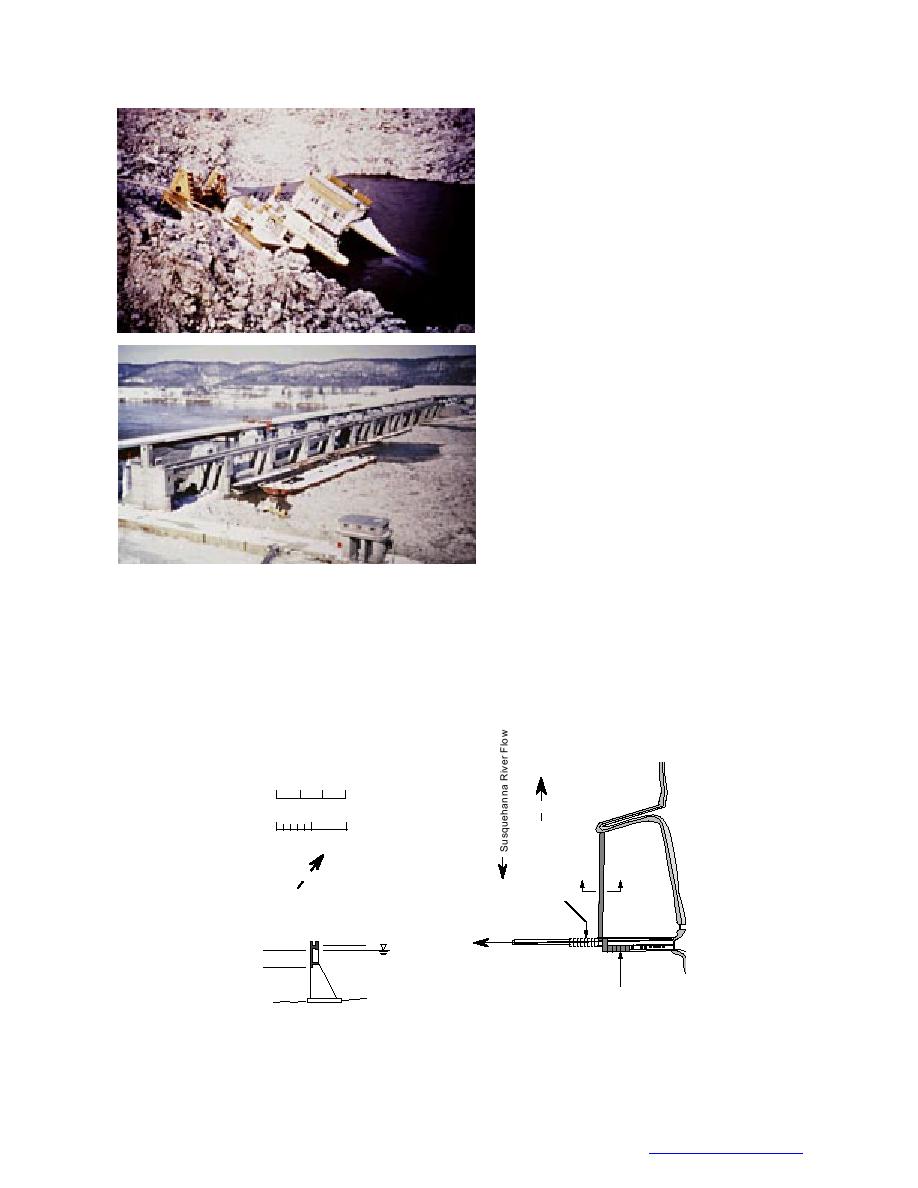
tions, most of the river flow passes through
the 418-MW powerhouse located on the east-
ern side of the river, to the left of a 460-m-long
ice and debris skimmer wall (Fig. 15). When
river discharge exceeds the 990-m3/s power-
house capacity, spillway gates on the western
side of the dam are opened to pass the addi-
tional water flow and break up ice.
Operators monitor ice jams that typically
form at the upstream end of the 24-km-long
pool but jams sometimes occur at a point 6.5
km above the dam. The aim is to maintain suf-
ficient pool depth to keep the jams from
grounding. If upstream flooding occurs, oper-
ators may try to break the jam by rapid gate
openings to drop the pool and get the ice mov-
ing. The ice is flushed past the dam along the
deeper western side of the channel.
In January 1996, a major ice and water
surge from upstream resulted in an instan-
taneous discharge at the dam of 22,700 m3/s,
above a background Susquehanna River
flow of 14,000 m3/s. At the time, the pool
was filled with broken ice and a 2.4-m head
differential developed across the skimmer
wall, overturning the 66-year-old structure
Figure 14. Towboat and barges against Markland Dam on
for two-thirds of its length. Gemperline and
the Ohio River, February 1978.
O'Donel (1998) theorized that, prior to the
surge, flow towards the powerhouse might
Susquehanna River: Safe Harbor Dam, 1996
have packed ice along the western side of the
The 1490-m-wide by 20-m-high Safe Harbor
skimmer wall. When the surge occurred, this
Dam on the Susquehanna River receives ice from
partial ice blockage may have delayed the stage
as far upstream as 600 km on the main stem, as
adjustment behind the wall, causing the head
well as from tributaries. Under average condi-
differential and failure.
0
300 m
N
0
500
1000 ft
C
C
N
4 Flood Gates
4 Regulating Gates
El. 232.0 (70.07 m)
El. 227.2 (69.2 m)
24 Flood Gates
El. 210.0 (64.0 m)
Powerhouse
Skimmer Wall
Section C-C
Figure 15. Plan view of the forebay and cross-sectional view of skimmer wall at Safe
Harbor Dam, Susquehanna River, Pennsylvania. (After Gemperline and O'Donel 1998.)
19
Go back to contents pg



 Previous Page
Previous Page
